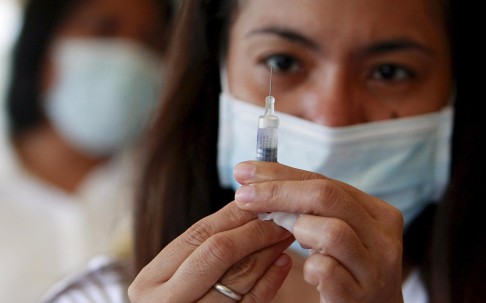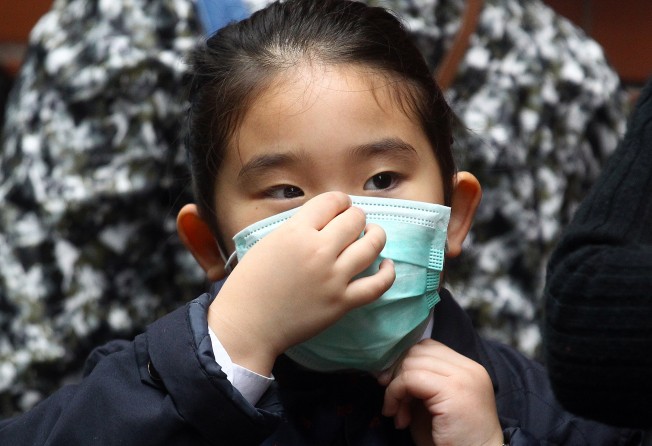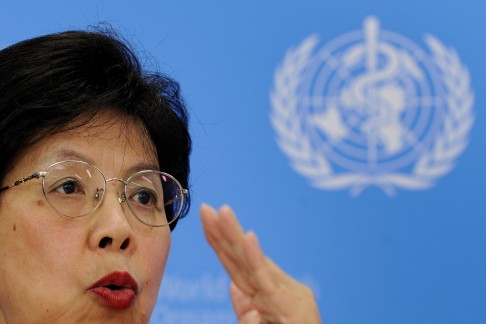
Flu fighters: WHO expert reveals story behind mismatched influenza vaccines in HK and world
Virulence of H3 virus as well as time lag between world health body's recommendations and vaccine roll-out to blame, says scientist

As the seasonal influenza outbreak continues to claim more lives in Hong Kong and around the world, questions have been raised on how experts could have gotten the formula for this season’s flu vaccine wrong.
But according to a member of the WHO’s international advisory group which makes recommendations on the vaccine’s make-up, the experts are not at fault.
“The reality is it’s not a mistake on our part. It’s the viruses infecting humans that have changed,” says Professor Anne Kelso in a phone interview from Melbourne, where since 2007 she has been director of the WHO Collaborating Centre for Reference and Research on Influenza.
She oversees the centre’s virological surveillance for the WHO Global Influenza Surveillance and Response System, which works as the world’s alert system for possible flu pandemics.
Next Monday, Kelso will be among 25 to 30 of the world’s top flu experts gathering at the WHO headquarters in Geneva to discuss the composition of the seasonal flu vaccine for the Northern Hemisphere’s next flu season. This includes Hong Kong.
Due to the constantly evolving nature of flu viruses, the frequent reformulation of vaccine strains is necessary in order for vaccines to be effective.
“It would be guesswork to say, ‘This is a change that will happen in the future.’ But what we do is to make the most up-to-date recommendations based on real data, real viruses, from the moment we go to Geneva,” says Kelso.
Over three days, Kelso and other experts will pore over mountains of data on circulating flu viruses collected over the last six months. On the fourth day, February 26, they will announce their recommendations.
Because developing and producing flu vaccines takes several months – in a process that is complex and difficult – these recommendations come up to eight months before the actual flu season it’s intended for.
“It’s a highly technical process that’s based on as much data as we can get on viruses circulating around the world. It takes scientific judgment, so it’s sometimes imperfect,” she says.
“But the major issues are the time lag between identifying the viruses and producing the vaccines, and the availability of the right viruses. It’s a massive amount of work going on in all the labs all the time, and very serious meetings on the data.”
Last year, soon after the experts had made their recommendations on the composition of the current flu season’s vaccine, one of the chosen strains – influenza A (H3N2 subtype) – began to morph.
Drifted, or mutated, H3N2 viruses were first detected in late March last year, according to Professor Ram Sasisekharan, from the Massachussetts Institute and Technology (MIT), who has done extensive research on viruses including H3N2.
This “antigenic drift”, as scientists call it, made the current vaccine much less effective than usual.
In Hong Kong, new research by the University of Hong Kong released earlier this week found that the current vaccine offers children a 46 per cent effectiveness rate against the predominant flu strain, and 20 per cent chance of protection for the elderly.
“Multiple studies have indicated that when there is a good match between vaccine and circulating virus, that the vaccine is between 60 to 80 per cent effective in mitigating infection,” says Sasisekharan, who is the Alfred H Caspary professor of biological engineering as well as health sciences and technology at MIT.
Since 1971, WHO has provided formal recommendations for the composition of seasonal flu vaccines based on the information provided by the Global Influenza Surveillance and Response System network.
The recommendations are announced twice a year and are used by the national vaccine regulatory agencies and the pharmaceutical companies to develop, produce and licence flu vaccines. The experts meet again in September, to discuss the Southern Hemisphere’s flu season.
Despite the mismatch in this season’s flu vaccine, Kelso says they will not be doing anything different this year in the consultation process.
“The fundamental process will be the same because it really is the best we can do,” she says. “We can’t do anything at the moment about the six-month gap between the recommendations and the time the drug companies roll out the vaccine.
“We also can’t stop the viruses that are circulating from changing. It’s a natural process we don’t control. We’re just trying to keep up with nature.
“It’s not something fundamentally wrong or inadequate about what we’re doing. If there’s something better we could do, we would do it,” she says.
It doesn’t help that the H3N2 viruses, which first emerged in the summer of 1968 in Hong Kong, are notoriously difficult to work with. Kelso notes that there are a lot of technical problems in analysing the H3 viruses and using a suitable version of the viruses to develop the vaccine.
There are three types of flu viruses: A, B, and C. Type A and B cause the seasonal flu. Type C also causes flu, but with symptoms that are much less severe.
The three kinds of flu viruses that commonly circulate among people today are influenza A (H1N1) viruses, influenza A (H3N2) viruses and influenza B viruses.
Flu vaccines generally consist of either three components (trivalent) or, increasingly, four (quadrivalent).
“H3 viruses keep going through antigenic drift somewhat faster than other viruses,” explains Kelso. “The match between the vaccine and circulating viruses by the time the influenza season starts is usually very high for the type A H1N1 component, partly because we’re fortunate those viruses don’t change as rapidly as H3.
“[The vaccine match] is usually very good for the type B viruses of the two lineages, Yamagata and Victoria [named after where the viruses were first identified]. And it’s generally least good for H3,” she says.
This flu season, among the influenza A H3N2 viruses circulating in the Northern Hemisphere, more than half are significantly different from the strain (called A/Texas/50/2012) present in the vaccines.
It is believed that most of these are different H3N2 viruses related to the A/Switzerland/9715293/2013 virus, explains Sasisekharan, who added that infection with this distinct class of virus is associated with more severe infection.
“Though this is highly dependent on both the virulence of the virus itself as well as the individual infected,” he says.
In most parts of the world, the H3 viruses have been most dominant, instead of H1N1 or type B, and that has led to the more severe flu season worldwide, says Kelso.
Asked about the strains that have caught her attention for the next flu season, Kelso declined to comment before the Geneva meeting, but said it was “likely we’ll spend a lot of time talking about H3 viruses”.
“We’re hopeful that the vaccine for the Southern Hemisphere flu season is going to be a better match, but of course it’s also possible that there will be further changes to the virus before the next season starts in this part of the world,” she says.
Kelso admits that having a mismatch in vaccine composition and the actual circulating viruses is “very frustrating given the efforts that go into the process”.
She is hopeful that in time there will be scientific developments that will make it much easier and faster to produce large amounts of vaccines, and also the ability to create so-called “universal vaccines” that don’t need updating as frequently and provide protection even as viruses change.
“There’s so much work going on with very exciting results getting published,” says Kelso. “In the meantime, we do the best with what we’ve got.”
This is the first of a two-part series on the flu outbreak. Read Part 2 here.

